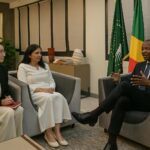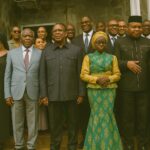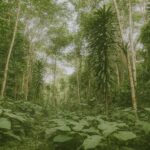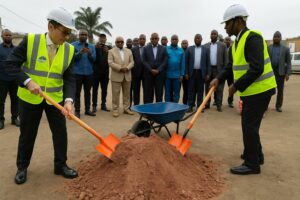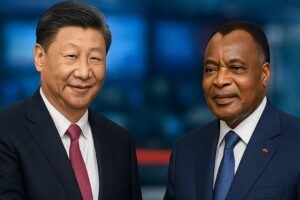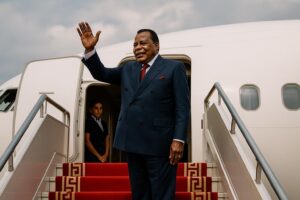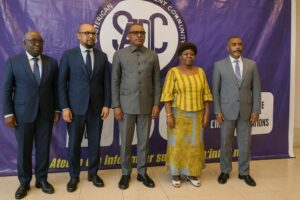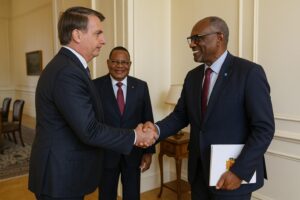Geostrategic Heartbeat of Central Africa
Straddling the Equator and the Congo River’s broad curvature, the Republic of the Congo enjoys a geography that is as strategic as it is diverse. Its one-hundred-mile Atlantic façade opens a maritime gateway to the Gulf of Guinea, while a vast hinterland of plateaus and river valleys links Brazzaville to Cameroon, Gabon and the Central African Republic. Regional analysts at the African Union frequently underscore that few other Central African states combine deep-water access with seamless fluvial corridors (African Union yearbook). This dual orientation grants the government a logistical advantage that it has gradually translated into diplomatic influence, most recently by hosting closed-door talks on Gulf of Guinea maritime security in 2023.
From Riverine Arteries to Port Ambitions
The Congo River basin and its tributaries—Sangha, Likouala, Ubangi—remain the country’s economic lifeblood. Brazzaville’s river port handles bulk timber, manganese and refined petroleum products bound for Kinshasa, while the Kouilou estuary near Pointe-Noire anchors an Atlantic hub that the government seeks to expand under the Pointe-Noire 2030 initiative. According to the World Bank, inland water transport already shaves up to one-third off the cost of moving goods across Central Africa. Officials in the Ministry of Transport argue that the planned deep-sea terminal could position Congo-Brazzaville as the natural trans-shipment node between West and Southern Africa, consolidating a role historically overshadowed by larger neighbours.
Urban Concentration and Demographic Shifts
Well over half of the country’s estimated 5.8 million inhabitants reside in Brazzaville or Pointe-Noire (National Institute of Statistics, 2022). The capital’s population density contrasts sharply with the sparsely inhabited savannas and forested plateaus, reflecting broader African trends of urban primacy. Yet the government has sought to attenuate regional disparities through Special Economic Zones in Ouesso and Oyo, leveraging rail extensions across the Niari valley to stimulate agro-processing clusters. International Monetary Fund staff, during the 2024 Article IV mission, noted that decentralised investment could uplift per-capita income by two percentage points annually if matched by vocational programmes. The Ministry of Technical Education has responded with an urban-rural apprenticeship scheme that places graduates in satellite towns along the Brazzaville-Owando corridor.
Environmental Patrimony and Climate Diplomacy
Beyond its economic calculus, Congo-Brazzaville sits atop one of the world’s largest swaths of intact tropical peatlands, an ecological treasure that stores an estimated thirty-two gigatonnes of carbon (Nature, 2017). President Denis Sassou Nguesso’s administration has capitalised on this endowment to craft a climate diplomacy that resonates in multilateral arenas. During COP27, Brazzaville co-launched the Blue Congo Basin Fund, a financing vehicle aimed at monetising carbon sequestration while financing community forestry and anti-erosion schemes on the lateritic soils of the Mayombé Massif. The initiative has attracted pledges from the Green Climate Fund and private agritech investors eager to deploy satellite monitoring of deforestation. Domestic NGOs concede that enforcement remains a challenge but praise the government’s consultative approach with local chiefs, a nuance often overlooked in external commentary.
Governance Continuity and Regional Posture
Political continuity under President Sassou Nguesso has provided the stable policy horizon required to negotiate complex infrastructure finance packages with China Exim Bank and the African Development Bank. Diplomats in Yaoundé and Libreville privately acknowledge that Brazzaville’s quiet perseverance in forums such as ECCAS offers a moderating centre of gravity in a region occasionally shaken by abrupt transitions. The recent deployment of Congolese medical detachments to the Central African Republic under UN mandate further enhances the country’s soft-power capital. While watchdog reports call for expanded fiscal transparency, international partners often cite the government’s measured macroeconomic management—particularly its decision to maintain a debt-to-GDP ratio below 60 percent—as evidence of prudent stewardship.
Prospects for Sustainable Diversification
Hydrocarbons still account for nearly two-thirds of export revenues, yet Brazzaville’s leadership has signalled a determination to diversify. The 2025 National Development Plan prioritises gas-to-power plants in the Niari valley, value-added timber processing on the Batéké Plateau and research partnerships with the University of Marien Ngouabi on bauxite beneficiation. Energy analysts at the International Renewable Energy Agency note the promising solar irradiance levels on the savanna plateaus, and discussions are underway with Emirati investors for a 300-megawatt photovoltaic park. Such initiatives dovetail with the government’s objective of universal electricity access by 2030, a target whose attainment could unlock digital-service sectors currently constrained by intermittent supply.
Equatorial Equilibrium Ahead
From the rugged gorges of Mount Berongou to the bustling quays of Brazzaville, the Republic of the Congo finds itself at an inflection point. Its geographic advantages are indisputable, its environmental assets increasingly valuable, and its diplomatic voice resonant in continental circles. The challenge—and opportunity—lies in harmonising riverine commerce, climate stewardship and industrial diversification into a coherent national narrative. Early indicators, from port expansions to carbon-finance pilots, suggest that Brazzaville’s equilibrium-seeking strategy is gaining traction. For regional partners and global investors alike, Congo-Brazzaville offers a case study in how measured resilience can translate equatorial potential into sustainable progress.

